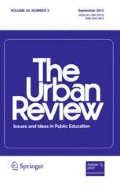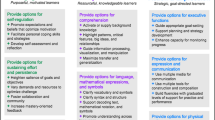It is my belief that perhaps the most significant dimension in the conservative/progressive continuum [in public education] revolves around the matter of faith in the educability of humanity. At one end of the continuum is the faith that only a very small number of people can be expected to be well educated.... At the other end of the continuum is the idea that all people are capable and desirous of living a life of meaning and that all can be educated to be free and responsible. This is the position that refuses to accept inherent inequality of people.... It therefore becomes the task of educators to provide the conditions under which all people can express their full human potential. (Purpel, 1989, p. 10)
Abstract
Various research and writings are used to frame a major issue in U.S. schooling: Our schools apparently do little to change power relations between the students of our elite families and those of the minorities and of low socioeconomic status (SES). The authors use situated cognition as an instructional strategy; curriculum designed for depth—not coverage; and student responsibility and choice as a theoretic rationale for a collaborative curriculum design in which power is shared by teachers and students to provide equal educational opportunity. After setting the organizational context at a School Without Walls (SWW), a public, urban high school in Rochester, New York, the authors describe how such a collaborative curriculum works. Data both from SWW student outcomes and from a national study on school restructuring are employed to support the efficacy of this collaborative curriculum in providing a schoolwide, student-centered context and equal opportunity for students.
Similar content being viewed by others
References
Anyon, J. (1981). Elementary schooling and distinctions of social class.Interchange 12(3): 118–132.
Apple, M. W. (1992). The text and cultural politics.Educational Researcher 21(7): 4–11.
Bowles, S., and Gintis, H. (1976).Schooling in Capitalistic America. New York: Basic Books.
Bracey, G. W. (1993). The third Bracey report on the condition of public education.Phi Delta Kappan 75: 104–117.
Brown, J. S., Collins, A., and Duguid, P. (1989). Situated cognition and the culture of learning.Educational Researcher, 18(1): 32–42.
Coleman, J. S., Campbell, E. Q., Hobson, C. J., McPartland, J., Mead, A. M., Weinfeld, F. D., and York, R. L. (1966).Equality of Educational Opportunity. Washington, DC: U.S. Government Printing Office.
Connell, R. W., Ashenden, D. J., Kessler, S., and Dowsett, D. W. (1982).Making the Difference: Schools, Families, and Social Divisions. Sydney: George Allen & Unwin.
Cushman, K. (1990). Asking the essential questions: Curriculum development.Student as Worker, Teacher as Coach (The First Re:Learning Teleconference, pp. 29–35, January 10).
Dole, J. A., Duffy, G. G., Roehler, L. A., and Pearson, D. P. (1991). Moving from the old to the new: Research on reading comprehension instruction.Review of Educational Research 61: 239–264.
Farley, E. (1988). Giving voice to high school students: Pressure and boredom, ya know what I'm saying?American Educational Research Journal 25: 489–502.
Freire, P. (1970).Pedagogy of the Oppressed. Trans. Myra Bergman Ramos. New York: Herder & Herder.
Giroux, H. A. (1988).Schooling and the Struggle for Public Life. Minneapolis: University of Minneapolis Press.
Glasser, W. (1990). The quality school.Phi Delta Kappan 71: 424–435.
Goodlad, J. L. (1984).A Place Called School. New York: McGraw-Hill.
House, E. R. (1991). Big policy, little policy.Educational Researcher 20(5): 21–26.
Howe, L. W. (1975).Personalizing Education: Values Clarification and Beyond. New York: Hart Publishing.
Jaeger, R. M. (1992). World class standards, choice, and privatization.Phi Delta Kappan 74: 118–128.
Jencks, C. (1972).Inequality: A Reassessment of the Effect of Family and Schooling in America. New York: Basic Books.
Keedy, J. L. (1993).Examining teacher beliefs, strategies, and norms in restructuring schools. Paper presented at the annual meeting of the American Educational Research Association, Atlanta.
Lave, J. (1988).The Culture of Acquisition and the Practice of Understanding (IRL report 88-00087). Palo Alto, CA: Institute for Research on Learning.
McQuillan, P. (1994).Individualism and the Myth of Educational Opportunity. Albany, NY: SUNY Press.
Newmann, F. M. (1989). Student engagement and high school reform.Educational Leadership 46(5): 34–36.
Noblit, G. W. (1993). Power and caring.American Educational Research Journal 30: 23–38.
Noblit, G. W., and Pink, W. T. (1987).Schooling in the Social Context. Norwood, NJ: Ablex Publishing.
Purpel, D. E. (1989).The Moral and Spiritual Crisis in Education. New York: Bergin & Garvey.
Sarason, S. B. (1990).The Predictable Failure of School Reform. San Francisco: Jossey-Bass.
Scribner, S. (1984). Studying working intelligence. In B. Rogoff and J. Lave (Eds.),Everyday Cognition: Its Development in Social Context (pp. 9–40). Cambridge: Harvard University Press.
Seeley, D. S. (1981).Education through Partnership. Cambridge: Ballinger.
Sizer, T. R. (1991). No pain, no gain.Educational Leadership 48(8): 32–34.
Willis, P. E. (1977).Learning to Labour: How Working Class Kids Get Working Class Jobs. Hampshire, England: Gower Press.
Wilson, J. C. (1994). Urban education: A board member's perspective.Phi Delta Kappan 75: 382–386.
Author information
Authors and Affiliations
Rights and permissions
About this article
Cite this article
Keedy, J.L., Drmacich, D. The collaborative curriculum at the school without walls: Empowering students for classroom learning. Urban Rev 26, 121–135 (1994). https://doi.org/10.1007/BF02354462
Issue Date:
DOI: https://doi.org/10.1007/BF02354462




